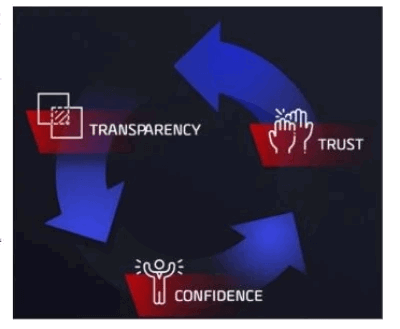Why Trust Matters in the Age of Urgency


In this interview, Asaff Zamir, Head of Global CS and Support at Siemplify, talks about the importance of trust and why it matters in building a strong CS organization.
Background and Career
Asaff has been in a customer-facing role for more than ten years. His foray into the high tech industry role started at Amdocs, focusing on employee’s experience.
He notes, “In this role, I learned a lot about the correlation between healthy culture to happy customers and that after all, the fundamentals of excellent service are cross-domain and customer type.”
After five years, he decided to move to a smaller company (Cellebrite) and practice customer success, a new domain in Israel. “For me to get involved in the business side of things, I have to learn two things (1) If I want to make an impact and drive influence, working in the smaller companies or start-ups is a good starting point (2) To drive meaningful experience and engage customers at a high level, transparency must be present at every touchpoint or interaction.
I fell in love with this space (CS), primarily because Customer Success is the only role that combines so many different domains and expertise into one hat. In other words, you can bring the additional capabilities and skills you have learned and gained in your previous role.
If I’m going to describe CS, Asaff says, “it is likened to a lighthouse.” Why? Because CS is responsible for driving customer focus and growth across the organization. We lead and guide the company to understand its customer’s needs better and help drive better business decisions. Simply put, “A great CS organization is the eyes of the company.”
Customer success guides the organization toward excellence
Because of the high and fierce competition in every domain: SaaS or non- SaaS, one of the primary differentiation is “Time to value”: How fast the product can show real value and return of investment.”

With this pressing need and urgency, I have developed a blueprint of how the customer’s journey [state of mind] should be developed and established.
This guides me when developing our CS processes and programs and what I’m using to preach CS inside my organization. I call this process the Trust Circle (see image on the right).
Here’s how this method works:
When you provide or deliver any kind of service or information to the customers, it must not be vague. Customers must know the [end] results; otherwise, the confidence of the customer throughout the whole process will not transpire or translate to (business) clarity, which is their commitment (it involves time and resources).
On the other hand, if the process is well defined (transparency), and customers can see where it leads or what benefits it entails, it conveys confidence (the reliability of their experience); hence it breeds trust.
The bottom line, “make sure you leave no such blind spots (disparity or disconnect) because, without transparency and confidence in the relationship, it will not breed trust, and without trust, there is no growth. (renewal or repeat business). There’s no other way customers will continue doing business with you if these key attributes are not present in the relationship.
Similarly, trust is not just a way to open up a conversation with your customers. It all starts with understanding their needs, expectations, motivations, and fears. If you know what these are, you can respond and deal with them appropriately and adequately.
Asaff says, “When you implement this state of mind, customers would know how to engage with your organization. Therefore, it becomes a huge competitive advantage in today’s business”.
Why Siemplify adopted CS? What’s the motivation behind it?
With the rapid changes happening in every business and marketplace, brand differentiation and business outcomes are crucial for successful partnerships.
‘From my perspective, the decision (why CS should be part of the organization) must start with the leadership team. Why? Because how the leadership or business executive views this team (CS) matters.
Understanding this role and why it matters to the organization comes down to these two areas:
1) What are we going to do to improve customer interaction if CS is NOT part (or non-existent) in the organization?
2) What are we going to do to ensure customers are going to stay and remain loyal?
Based on these prevailing conditions, “the missing platform in building out a community of customers is what?” The answer is CS. Remember, Customer Success aims to drive growth and proactively lead customers as their trusted advisors to maximize their business outcomes.
As pointed out earlier, the Trust Circle can’t be broken. It only shows that Customer Success is the way to connect, create a community, and build and inspire loyalty in the organization, partners, and customers.
